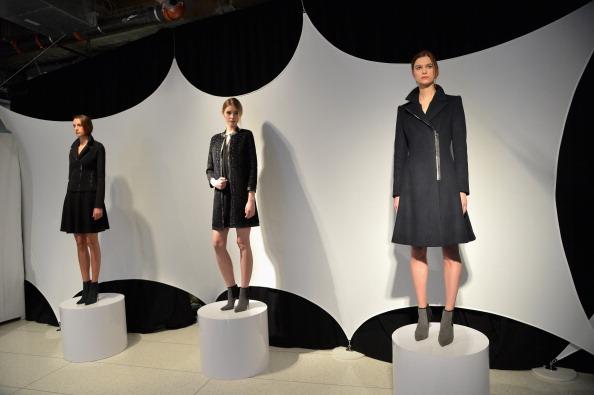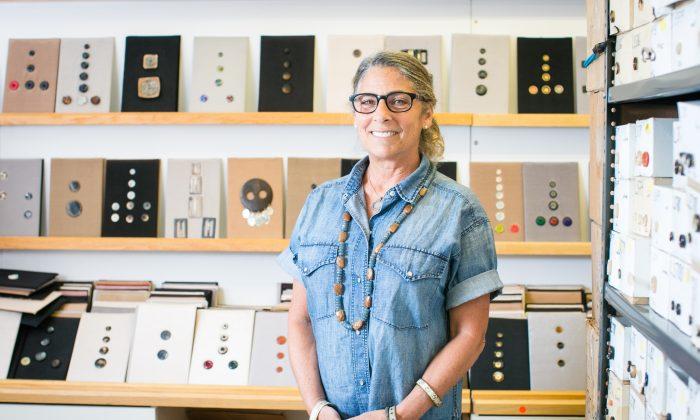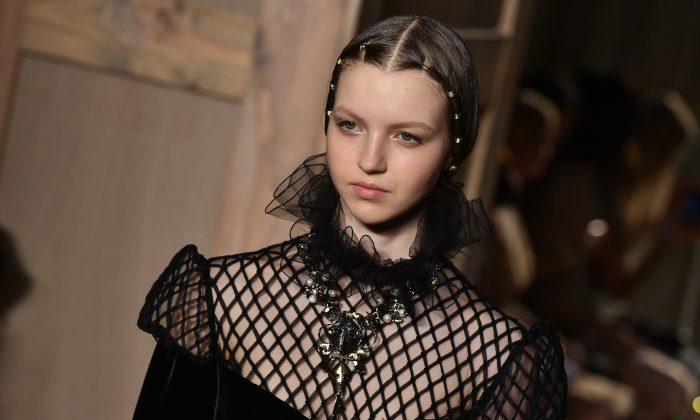Fashion designer Elie Tahari has seen more ups and downs than most, if not all, of his peers. His first job as an air force mechanic in Israel is not the usual preparation for a career in high fashion. But it did bestow him with the patience and nerve that would serve him well through the 40 years he has spent in the rag trade—a milestone he is celebrating this year.
Tahari arrived in New York City with a backpack of clothes and $100 in his pocket in 1971.
He slept on a bench in Central Park, not far from the building he now owns on Fifth Avenue. The school of hard knocks doesn’t get much harder than that. But it’s not something he recommended to his eager audience of fashion students at New York’s Fashion Institute of Technology where he was guest speaker on April 3.
Tahari shared highlights from his 40-year-long career and it would be fair to say most of the audience expected him to share his concrete knowledge of the fashion industry.
Instead, Tahari took a philosophical approach. He started by saying the guiding principles of his career are a passion for fashion and living a life of truth and compassion. This became Tahari’s rhyming mantra for the rest of the talk and something he referred to again and again.
Needless to say, compassion is not the first concept that comes to mind when talking about the fashion industry, but Tahari’s insists that it is what one must sow to reap long-lasting rewards. He attributes everything he knows to an established pattern-maker and business owner. Instead of continuing to grow his own business, Tahari’s mentor chose instead to work with Tahari as he started out. The was no pay involved, he did it because Tahari was “a nice person.”
It was Tahari’s first brush with compassion and it also inculcated in him the ethic he seems to abide by today.
“If you make a decision on ‘what’s good for me’ then your decision is short-sighted,” he said. “But when you make the decision ‘what’s really the truth?’ and to share, then it’s a long range satisfaction, contentment and truth.” He added that coming from “a good place” is a harder path to follow.
But it wasn’t always like this. By Tahari’s own admission, fame went to his head during the launch of his brand in 1974, with a show at the famous New York disco “Studio 54.” Passion overrode his more spiritual side and he found himself in dire straights, about which he didn’t mention specifics, except to say, “I lost myself many times... I always lived on the edge and I don’t recommend it. I recommend the middle of the road.”
Nevertheless, he was there for the seminal moments. He knew nothing about fashion when he started out and spent his nights in dance clubs. Tahari’s first company was called “Morning Lady” and he was one of the many designers who made printed polyester dresses that women wore to work in the early ‘70s.
At the time, ladies’ pants were like men’s pants but in women’s sizes. After seeing someone try on a pair of ski pants with a side zip, which made the front more flattering, Tahari had a Eureka moment and started making tailored women’s pants with the zipper at the side—a style that proved to be very popular with working women.
“Instinct of survival” was his answer when one of the FIT students asked Tahari how to be a good designer and business person: “[When starting out] if somebody showed me a fabric that is very low price, I wanted it. I didn’t ask how is it going to wear, how it was going to wash. Now it’s easy to make a decision: I want to find the best that money can buy for that price range for my clients. Now there is no compromise, that is the compassion part.”
Tahari’s malleability and astute powers of observation allowed him to go from maker and purveyor of the disco-era tube-top to “King of Suits” in the 1980s when he is seen to have empowered women with his collection of feminine, shoulder-pad-endowed business ensembles.
His current company is a fashion empire on five continents with a reputed turnover of $500 million per year and over 600 stores in the US alone.
The current Tahari womenswear collection demonstrates his finger is still on the pulse. He uses modern materials like scuba fabric paired with leather and laser-cut lambskin to achieve feminine lacy effects with a totally modern twist.
Nowadays he is more concerned about his legacy and bestowing his hard-earned philosophy on the next generation. From his description, one gets the impression that the constant change and evolution of fashion is like a wave that can never be fully understood or controlled but something one must feel and accept in order for the current to take you to a good place. Then there’s the moment when the leap of faith must happen.
“It’s an illusion and it’s an evolution, and how do you approach it since it’s always changing? Not with confusion because it’s changing, it is always out there, but in here (pointing to his heart) is always truth-that is my anchor. Truth is love, truth is sharing.”




